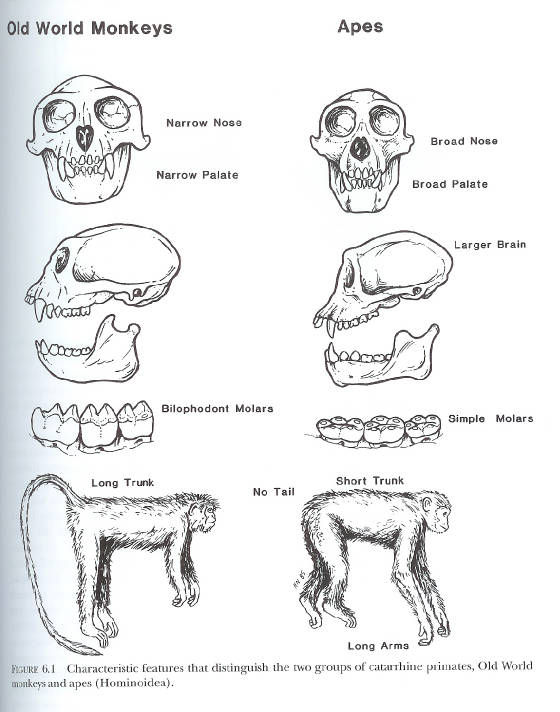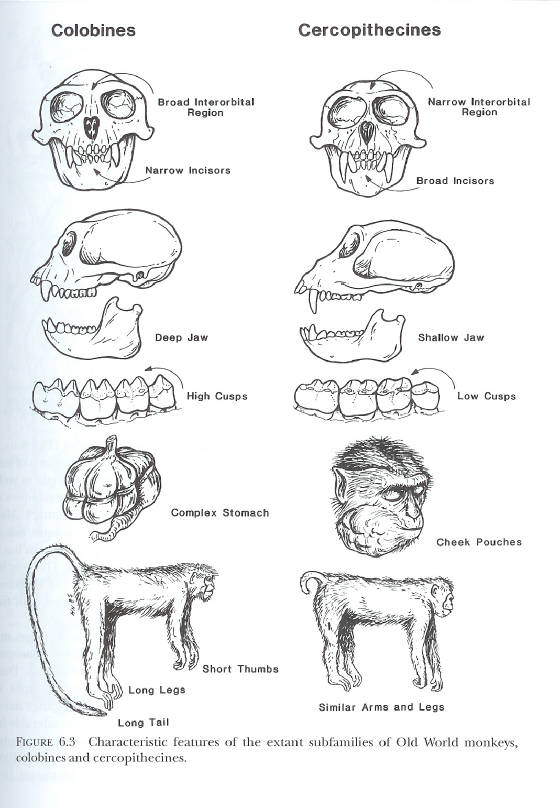|
Click here for genus info
The Old World Monkeys, are also known as the Cercopithecoids. There are specific dental morphologies that separate Old World
monkeys with the apes. Cercopithecoids have bilophodont molars, and large sharp canines which are usually sexually dimorphic.
There is a honing complex in which the upper canines are sharpened by the lower premolars. Old World monkeys have a narrow
palate compared to apes.

The cercopithecoids can be divided into two subfamilies--the Cercopithecinae and the Colobinae. The two groups differ greatly
due to their differences in dietary habits. The colobines eat leaves and seeds, whereas the cercopitecinaes eat fruit. Their
dental morphologies subsequently match their diets. Cercopithecinaes have broad incisors, molars with high crowns and low
cusps. Colobines are the opposite in having narrow incisors and molar teeth with high cusps.
Cercopithecines-
Macaques: These primates have the usual cercopithecine dental features, as well as long third molars.
Mangabeys: These too have long molars. This group contains two genera (Cercocebus and Lophocebus). The Cercocebus are
more sexually dimorphic and have larger teeth than the Lophocebus. The Cercocebus feed on fruit and hard nuts and seeds.
The Lophocebus feed on fruit and invertebrates.
Baboons: These primates have very sexually dimorphic canines. Their lower pre molars are long to form the honing complex
which sharpens the giant canines. The geladas have complex enamel foldings in their molar teeth.
Mandrills: These primates are sexually dimorphic, have large maxillary ridges, and long tooth rows.
Guenons: These primates are sexually dimorphic. They possess narrow molar teeth.
Colobines-
These primates have sharp premolars and molars with narrow incisors. There is less sexual dimorphism in these species.
To see examples of genera please proceed to the next page. To see specific dental morphologies proceed to the species page
to view skulls and jaws.

Information provided on this page was taken from Primate Adaptation and Evolution, Second Edition, by John G. Fleagle. Please
see "sources" page for more information.
|

